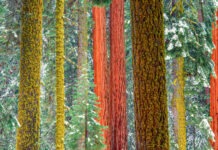Top 5 Unusual and Innovative Bio-Based Materials in 2025
As the construction industry intensifies its journey toward sustainability and carbon neutrality, nature-inspired, bio-based materials are leading a revolutionary shift. In 2025, these materials go beyond traditional eco-options to offer remarkable properties—from self-healing fungi-based bricks to ocean-cleaning composites. Here are the five most unusual and promising bio-based materials transforming how we build:
1. Mycelium: The Living Fungal Network
Mycelium, the root-like fiber network of fungi, is emerging as a biodegradable, fire-resistant, water-repellent, and lightweight building material with enormous potential. Grown on agricultural waste, mycelium composites can be molded into bricks, insulation panels, and acoustic tiles.
Cutting-edge research expands its capabilities beyond static materials; scientists have developed “living mycelium” materials integrated with bacteria that can self-heal cracks and potentially remediate contaminants, offering a future of self-maintaining structures. Mycelium’s thermal insulation performance rivals traditional materials like extruded polystyrene insulation (XPS), while boasting significantly lower embodied carbon and biodegradability (Khaled et al., 2025).
These materials also regulate indoor humidity and can sequester significant amounts of atmospheric carbon during production. Challenges such as mechanical strength and large-scale manufacturing are research priorities, but developers are optimistic about scaling mycelium for widespread building use (Heveran et al., 2025).
2. Bio-Composite Insulated Structural Panels (Bio-SIPs)
Innovatively combining recycled plastics with bio-based fibers, Bio-SIP panels provide exceptional insulation, light weight, and circular economy benefits by repurposing plastic waste. These prefabricated panels reduce construction times and embodied carbon footprints.
Research and startups in 2025 have refined fire resistance and structural properties while advancing their usage in modular construction and mass timber hybrid systems to provide renewable alternatives to synthetic foams and traditional SIPs.
3. Seaglass-Algae Polymer Composite
Facing environmental challenges from marine litter and invasive algae blooms, researchers have innovated composites made from recycled seaworn glass and polymers derived from problematic algae species. These composites offer a durable, weather-resistant material suited for coastal construction, cladding, and furnishings.
This approach tackles waste management and coastal ecosystem restoration simultaneously, producing locally sourced materials with minimal carbon impact.
4. Carbon-Capturing Concrete Alternatives
Traditional concrete manufacture accounts for 8% of global CO₂ emissions. Novel bio-concretes infused with biochar and carbon mineralization technologies absorb CO₂ during curing to become carbon-negative, robust, and durable alternatives. These alternatives are entering pilot projects worldwide, enabling low-carbon urban infrastructure.
5. Transparent Wood
A breakthrough bio-based material where wood’s lignin is removed and replaced with epoxy creating a stronger, lighter, thermally insulating alternative to glass. Transparent wood panels revolutionize energy-efficient glazing, featuring rapid renewability from fast-growing species and superior insulation properties. This material reduces energy needs and offers striking new architectural possibilities.
Conclusion: Nature’s Blueprint for Greener Construction
The convergence of biology and construction technology in these five materials exemplifies the 2025 wave of biofabrication and circularity in building science. From self-healing mycelium composites to ocean-cleaning algae-seaglass panels, new possibilities abound for healthier, more beautiful, and climate-friendly structures.
Staying abreast of advances in these materials is vital for builders, architects, and policymakers eager to design a carbon-neutral future that honors the genius of natural systems.
References
UBE article on transparent wood and sustainable composites, 2025.
Khaled, B., et al. (2025). Evaluating Mycelium as an insulation material: A comparative study on thermal performance, comfort, and energy efficiency. Zenodo.
Heveran, C., et al. (2025). New living building material made from fungi and bacteria. Smithsonian Magazine, April 23, 2025.
Viles, E., et al. (2025). Living fungus-based building material repairs itself for over a month. Cell Reports Physical Science, April 15, 2025.
StartUs Insights and PlanRadar reports on bio-composites and innovative materials, 2025.

















